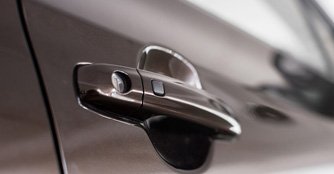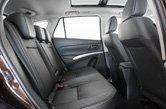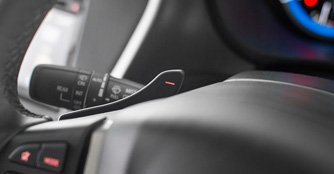Subaru XV 1.6 (A) vs Suzuki S-Cross 1.6 CVT Panoramic Roof 4WD (A)
26 Feb 2015|59,120 views
With a bevy of compact crossovers to choose from, we take a look at the only two Japanese compact crossovers in our market to offer all-wheel drive traction that brings advantages for off-road excursions.
The Subaru XV was introduced as a concept in 2011 at the Shanghai Motor Show, based on a raised suspension version of the Impreza five-door hatchback. Later that year, the production version was launched at the Frankfurt Motor Show.
On the other side of the road, the Suzuki S-Cross has a slightly longer history. It was introduced as the SX4 at the 2006 Geneva Motor Show and the second generation was presented as the SX4 S-Cross at the same motor show seven years later. Locally, the crossover is just called the S-Cross.
Exterior
Just like its bigger SUV brethren, the Subaru Forester, the XV sports a rugged appearance that makes it look as though it is ready to go off the tarmac anytime. This is enhanced by the car's high-arching wheel wells and distinctive roof rails.
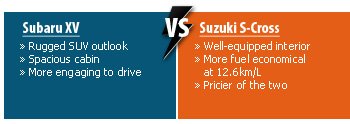 |
The Subaru also carries a sporty look, thanks to a close resemblance to the Impreza, when viewed at certain angles. Being the larger and wider one at 4,450mm x 1,780mm x 1,570mm (L x W x H) as well as having a higher ground clearance of 220mm, the XV has a stronger presence on or off the road.
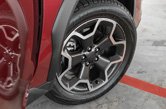 | 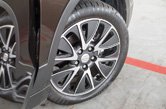 |
On the other hand, Suzuki has opted for a safer approach and has introduced sophistication to its compact crossover. The S-Cross' new look is worlds apart from its predecessor's, shedding the boxy image for a sleek-looking sheet metal.
The classy new image is also complemented by the new HID head lights with LED daytime running lights that assist in providing excellent visibility. The new design for the S-Cross is one that is praise-worthy and allows the car to bear some European traits (it is made in Hungary, by the way).
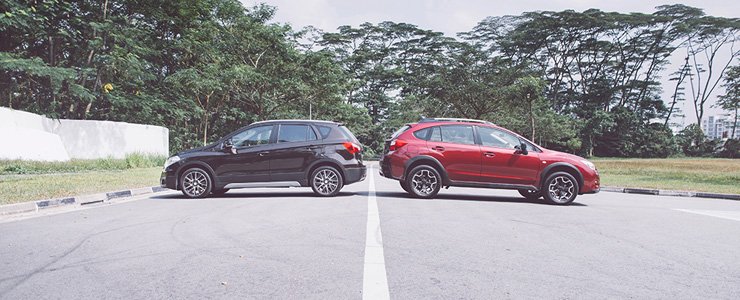 |
Interior
With a larger wheelbase of 2,635mm, which is 35mm more than its rival here, the XV's cabin is more spacious for passengers but not for cargo. Nonetheless, the 380-litre boot is more than enough for running daily errands or grocery shopping.
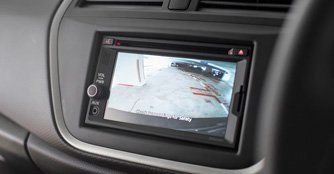
The design of the XV's interior is a little plain-looking and it feels a tad dated too, with features such as manual air-conditioning still evident here. But that's not to say it's a bad place to be in because it keeps to a fuss-free and easy-to-reach layout.
In comparison, the S-Cross's upmarket cabin boasts solid materials with excellent fit and finish - evoking a feeling that it will last a long time.
Although there is a greater use of black inside, a panoramic sunroof helps to brighten up the otherwise dark interior. Switchgear arrangement is neat and there's even a premium touch to some of the buttons and knobs.
Space at the back is decent for three Asian adults, however, the S-Cross triumphs the XV in terms of boot space. At 430 litres, there is capacity for more luggage on a short road trip up North.
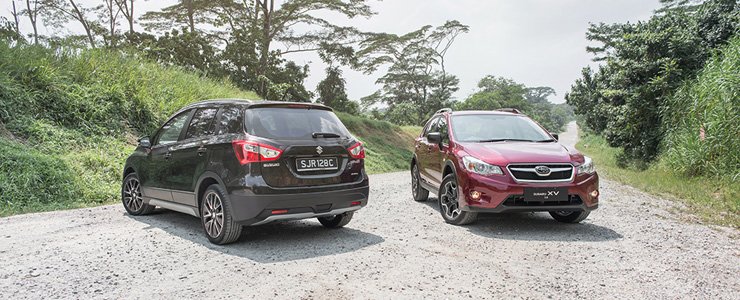 |
The Drive
From the word 'go', the XV picks up speed smoothly, thanks to the excellent combination of a 1.6-litre Boxer engine and a CVT transmission. Off the line, the powerplant is eager to lug the 1.4-tonne vehicle along, going from 0 to 100km/h in 13.8 seconds.
Despite being all-wheel drive and weighing 155kg heavier than the S-Cross, the XV returned rather good fuel economy of 12km/L during our time with it. An automatic start/stop system was also on hand to contribute to its efficiency.
The Subaru is quite a gem in the handling department too. Thanks to its Symmetrical All-Wheel Drive system and the horizontal layout of the Boxer engine that reduces centre of gravity, the XV is nimble and responds with accuracy and confidence. More importantly, it delivered a sporty ride that is not too jarring for its occupants.
 | 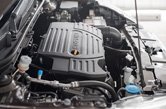 |
In comparison, the S-Cross is the punchier one and is powered by a 1.6-litre powerplant that is also mated to a CVT gearbox.
Compared to Subaru's all-wheel drive system, Suzuki's ALLGRIP 4WD system features four modes. The Auto mode uses 2WD by default and switches to 4WD when it detects a large gap in the front and rear wheel spin.
As for the Sport mode, it tweaks the throttle for keener response and transfers more torque to the rear, allowing for brisk handling in the twisties. Snow mode optimises 4WD control in unfavourable road conditions, while Lock mode is useful in extricating the car in the unfortunate event that it gets stuck in sticky situations.
Thanks to this 'part-time' all-wheel drive system, the S-Cross is able to achieve better fuel efficiency and we managed an impressive 12.6km/L despite driving the car hard. That said, the Suzuki may be a little less engaging in its handling but it delivers a cushier ride, soaking up bumps and ruts without a hitch.
Conclusion
The Subaru XV offers a good alternative to the bigger Sport Utility Vehicles (SUVs) with its spacious interior and rugged looks. At the same time, it engages the driver with its impressive handling. Unfortunately, the car lacks a little in features, which may justify its lower price of $108,600 (as of 18th February 2015).
On the other hand, the S-Cross offers a more convincing argument for a small family crossover, with a well-equipped and well-arranged cabin. It is also blessed with decent looks and dynamics with good fuel economy. However, it costs $10,300 more than the XV.
Declaring a victor is difficult, as neither car stands out as a clear winner. Each offers a package that suits different buyers. But in the end, we are swayed by the XV's more attractive price and it has our vote for this comparison.
With a bevy of compact crossovers to choose from, we take a look at the only two Japanese compact crossovers in our market to offer all-wheel drive traction that brings advantages for off-road excursions.
The Subaru XV was introduced as a concept in 2011 at the Shanghai Motor Show, based on a raised suspension version of the Impreza five-door hatchback. Later that year, the production version was launched at the Frankfurt Motor Show.
On the other side of the road, the Suzuki S-Cross has a slightly longer history. It was introduced as the SX4 at the 2006 Geneva Motor Show and the second generation was presented as the SX4 S-Cross at the same motor show seven years later. Locally, the crossover is just called the S-Cross.
Exterior
Just like its bigger SUV brethren, the Subaru Forester, the XV sports a rugged appearance that makes it look as though it is ready to go off the tarmac anytime. This is enhanced by the car's high-arching wheel wells and distinctive roof rails.
The Subaru also carries a sporty look, thanks to a close resemblance to the Impreza, when viewed at certain angles. Being the larger and wider one at 4,450mm x 1,780mm x 1,570mm (L x W x H) as well as having a higher ground clearance of 220mm, the XV has a stronger presence on or off the road.
On the other hand, Suzuki has opted for a safer approach and has introduced sophistication to its compact crossover. The S-Cross' new look is worlds apart from its predecessor's, shedding the boxy image for a sleek-looking sheet metal.
The classy new image is also complemented by the new HID head lights with LED daytime running lights that assist in providing excellent visibility. The new design for the S-Cross is one that is praise-worthy and allows the car to bear some European traits (it is made in Hungary, by the way).
Interior
With a larger wheelbase of 2,635mm, which is 35mm more than its rival here, the XV's cabin is more spacious for passengers but not for cargo. Nonetheless, the 380-litre boot is more than enough for running daily errands or grocery shopping.
The design of the XV's interior is a little plain-looking and it feels a tad dated too, with features such as manual air-conditioning still evident here. But that's not to say it's a bad place to be in because it keeps to a fuss-free and easy-to-reach layout.
With a larger wheelbase of 2,635mm, which is 35mm more than its rival here, the XV's cabin is more spacious for passengers but not for cargo. Nonetheless, the 380-litre boot is more than enough for running daily errands or grocery shopping.
The design of the XV's interior is a little plain-looking and it feels a tad dated too, with features such as manual air-conditioning still evident here. But that's not to say it's a bad place to be in because it keeps to a fuss-free and easy-to-reach layout.
In comparison, the S-Cross's upmarket cabin boasts solid materials with excellent fit and finish - evoking a feeling that it will last a long time.
Although there is a greater use of black inside, a panoramic sunroof helps to brighten up the otherwise dark interior. Switchgear arrangement is neat and there's even a premium touch to some of the buttons and knobs.
Space at the back is decent for three Asian adults, however, the S-Cross triumphs the XV in terms of boot space. At 430 litres, there is capacity for more luggage on a short road trip up North.
The Drive
From the word 'go', the XV picks up speed smoothly, thanks to the excellent combination of a 1.6-litre Boxer engine and a CVT transmission. Off the line, the powerplant is eager to lug the 1.4-tonne vehicle along, going from 0 to 100km/h in 13.8 seconds.
Despite being all-wheel drive and weighing 155kg heavier than the S-Cross, the XV returned rather good fuel economy of 12km/L during our time with it. An automatic start/stop system was also on hand to contribute to its efficiency.
The Subaru is quite a gem in the handling department too. Thanks to its Symmetrical All-Wheel Drive system and the horizontal layout of the Boxer engine that reduces centre of gravity, the XV is nimble and responds with accuracy and confidence. More importantly, it delivered a sporty ride that is not too jarring for its occupants.
In comparison, the S-Cross is the punchier one and is powered by a 1.6-litre powerplant that is also mated to a CVT gearbox.
Compared to Subaru's all-wheel drive system, Suzuki's ALLGRIP 4WD system features four modes. The Auto mode uses 2WD by default and switches to 4WD when it detects a large gap in the front and rear wheel spin.
As for the Sport mode, it tweaks the throttle for keener response and transfers more torque to the rear, allowing for brisk handling in the twisties. Snow mode optimises 4WD control in unfavourable road conditions, while Lock mode is useful in extricating the car in the unfortunate event that it gets stuck in sticky situations.
From the word 'go', the XV picks up speed smoothly, thanks to the excellent combination of a 1.6-litre Boxer engine and a CVT transmission. Off the line, the powerplant is eager to lug the 1.4-tonne vehicle along, going from 0 to 100km/h in 13.8 seconds.
Despite being all-wheel drive and weighing 155kg heavier than the S-Cross, the XV returned rather good fuel economy of 12km/L during our time with it. An automatic start/stop system was also on hand to contribute to its efficiency.
The Subaru is quite a gem in the handling department too. Thanks to its Symmetrical All-Wheel Drive system and the horizontal layout of the Boxer engine that reduces centre of gravity, the XV is nimble and responds with accuracy and confidence. More importantly, it delivered a sporty ride that is not too jarring for its occupants.
In comparison, the S-Cross is the punchier one and is powered by a 1.6-litre powerplant that is also mated to a CVT gearbox.
Compared to Subaru's all-wheel drive system, Suzuki's ALLGRIP 4WD system features four modes. The Auto mode uses 2WD by default and switches to 4WD when it detects a large gap in the front and rear wheel spin.
As for the Sport mode, it tweaks the throttle for keener response and transfers more torque to the rear, allowing for brisk handling in the twisties. Snow mode optimises 4WD control in unfavourable road conditions, while Lock mode is useful in extricating the car in the unfortunate event that it gets stuck in sticky situations.
Thanks to this 'part-time' all-wheel drive system, the S-Cross is able to achieve better fuel efficiency and we managed an impressive 12.6km/L despite driving the car hard. That said, the Suzuki may be a little less engaging in its handling but it delivers a cushier ride, soaking up bumps and ruts without a hitch.
Conclusion
The Subaru XV offers a good alternative to the bigger Sport Utility Vehicles (SUVs) with its spacious interior and rugged looks. At the same time, it engages the driver with its impressive handling. Unfortunately, the car lacks a little in features, which may justify its lower price of $108,600 (as of 18th February 2015).
On the other hand, the S-Cross offers a more convincing argument for a small family crossover, with a well-equipped and well-arranged cabin. It is also blessed with decent looks and dynamics with good fuel economy. However, it costs $10,300 more than the XV.
Declaring a victor is difficult, as neither car stands out as a clear winner. Each offers a package that suits different buyers. But in the end, we are swayed by the XV's more attractive price and it has our vote for this comparison.
Car Information
Subaru XV 1.6 (A)
CAT A|Petrol|15.4km/L
Horsepower
84kW (113 bhp)
Torque
150 Nm
Acceleration
-
This model is no longer being sold by local distributor
All Used Subaru XVSuzuki S-Cross 1.6 CVT Panoramic Roof 4WD Premium (A)
CAT A|Petrol|16.1km/L
Horsepower
86kW (115 bhp)
Torque
156 Nm
Acceleration
13.5sec (0-100km /hr)
This model is no longer being sold by local distributor
All Used Suzuki S-CrossThank You For Your Subscription.

































